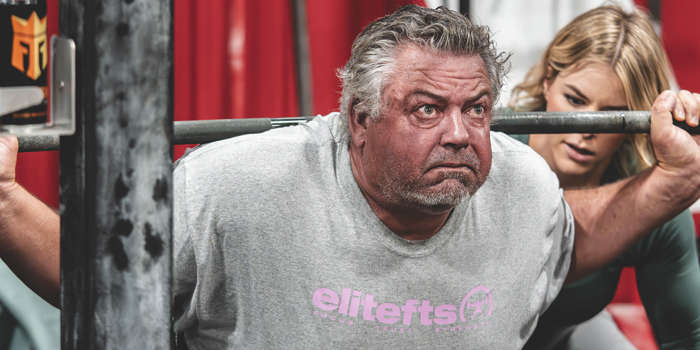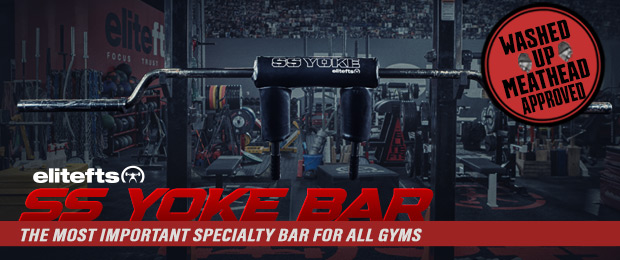
I was told the stupidest thing when I started to work as a personal trainer in 2002. When we had elderly members enter the gym, we were told that we should have them use the machines since free weights are too complicated and come with a risk for injuries. I noticed that the elderly members who had been at the gym before in their youth had never used the machines. They remember the gym they went to with barbells, dumbbells, and benches for back extensions and crunches. What we now presented to them was a whole new installation. But we knew best, so they should listen to us, of course. We were the educated trainers!
What I realize today, 20 years later, is that they were right and we were wrong. Let me explain why.
At the beginning of 2000, machines were the shit. They had developed machines to isolate every muscle you can think about. And they/we thought that if we could isolate a muscle, we could give it the optimal training without tearing on any other muscles. In our minds, it was the optimal way to train. Legs on Monday, Chest on Tuesday, Back on Wednesday, and so on. The problem, however, is that our bodies are not built to move that way. Our muscle system is built to work in a synergetic position where every movement depends on another movement. With elderly people, we should not focus on machines at all. They need to train the ability to move, strengthen their stability muscles, and get their blood running.
Real-Life Application
If you think about it, get your Grandma to the gym and let her train in machines. She can train herself to be strong in the seated shoulder press, for example, but when she puts a heavy bag on the shelf, she might hurt her back since her shoulders are trained to lift heavy objects without the involvement of her core muscles or her legs. It can even be the case that she has done the leg press and abdominal machine all separately. But when you should do a task that demands more muscles, they are not trained to work together in a synergetic movement.
This gets even more obvious to me after my father-in-law had his knee surgery and got two years of physiotherapy, in which he even got worse. Finally, my wife took over his rehabilitation and trained him like an athlete, but adapted to his ability, of course. We could notice an improvement after just one month of this training. He got to walk with a Prowler®, did box squats to a high box, boxing against pads, had to walk obstacles, and was constantly challenged to his ability.
Watch an example of these adaptations here.
Conclusion
This is not just about the muscle's strength, it is about the neurological adaptation. We get better at what we train for. There is an old saying that goes, “You should train like you compete.” We can use the same mindset for anyone. If you should compete to run in the Olympic games, you have to train to get better at running. If your goal is to get the newspaper to the mailbox, you need to train the ability that the tasks demand for you to do it.
We do not train like bodybuilders since we aim not to show off our muscles. We train to perform since our goal is to perform! Simple as that.
Stefan Waltersson has been working as a personal trainer for 20 years. He is Westside Barbell certified as a special strength coach. He is also educated and trained by Professor Boris Sheiko. Stefan works as a lecturer and gym owner with 350 members. Previously, he worked as a nurse assistant in healthcare, with neurology as his main focus. You can find him on Instagram as @coach_waltersson. Check out his website.












I work in PT as a licensed PTA. I have seen so many, well practically every therapist underdose strength training with the elderly. They also make assumptions that the elderly can't handle difficult exercises and can only use light weights with High Reps and a red or yellow Thera band. I've had so many patients thank me for working them harder than other therapist and honestly the work wasn't even that hard so that tells you something about what the other therapists are doing. I better the therapist be startled that I use a gold or black theraband with patients or a 10 lb ankle weight.....oh my! Not every patient is going to want to work and many make assumptions about themselves that they're too old to do it or that they might get hurt, which they could if they don't know what they're doing or have a therapist who doesn't know what they're doing. I've always thought I could be way more effective at what I do if I just work with people by myself in my garage gym doing actual real weight training not 2 lb ankle weights in red theraband. That isn't to say that you can train an elderly person the exact same way as a younger person you have comorbidities and injuries to think about. When people make assumptions about the elderly that's called ageism. There are some somewhat Universal truths about us as we age..... like more aches and pains, losing muscle mass and getting weaker even if you do weight train. I've been at this for 40 years and I've been a PTA for five of those years. It was amazing to me how little the therapist I have been around know about strength training.